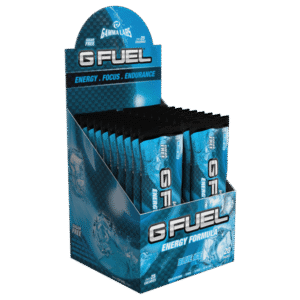Home » Corrugated POP Display Printing
Corrugated POP Display Printing
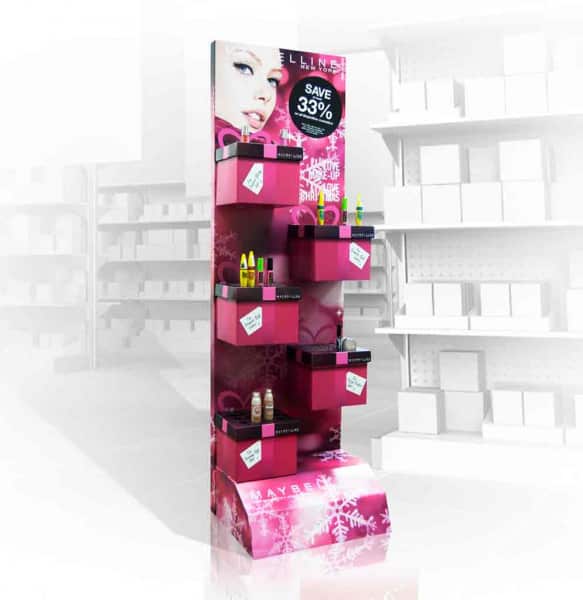
Point-of-purchase (POP) displays are designed to capture shopper attention and influence buying decisions. Beyond structure and branding, the quality of print determines how well a display communicates from multiple viewing angles in a retail environment. Selecting the right printing method ensures your display performs both visually and functionally.
Printing Methods for Corrugated POP Displays
Not all printing methods are suited for corrugated displays. Each has its own strengths and trade-offs in cost, speed, quality, and run size. The three most common methods are:
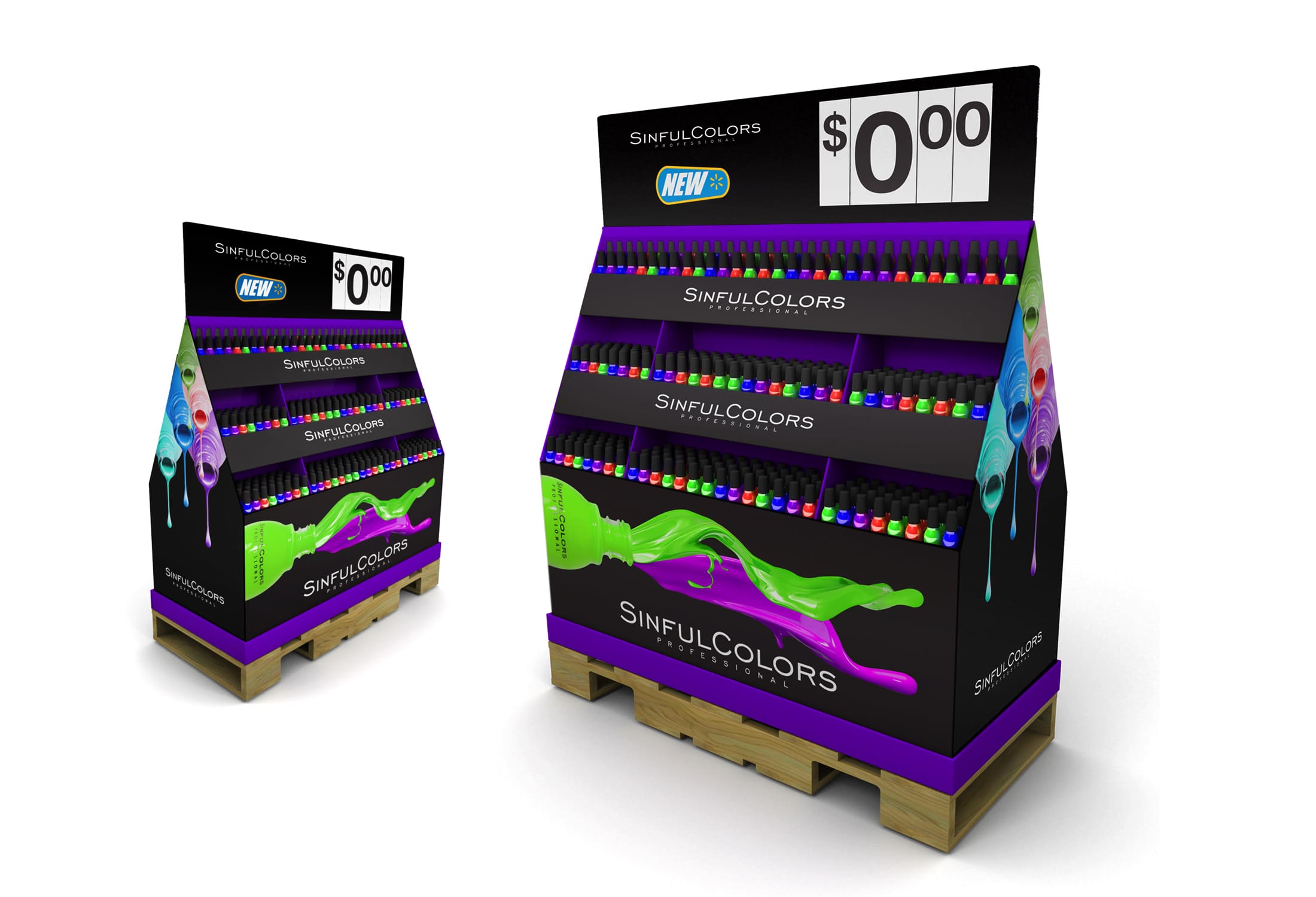
Flexographic Printing
Flexographic printing uses plates to apply ink as material passes through rollers.
Advantages
Cost-Efficient at Scale: Once plates are created, cost per unit is low for large or repeat orders.
Pantone Accurate: Ensures precise color matching across production runs.
Versatile: Works on uneven surfaces and a wide range of substrates.
High Speed: Suited for mass production.
Limitations
High Startup Costs: Plates and tooling are expensive, making short runs less economical.
Poor for Sampling: Costly and impractical to produce prototypes.
Best Fit: Large-volume retail displays where consistency and color accuracy are priorities.

Digital Printing
Digital printing applies artwork directly from a file to the substrate, eliminating plates.
Advantages
Low Startup Cost: Cost-effective for short runs and prototypes.
Fast Turnaround: Ideal for tight deadlines or seasonal campaigns.
Flexible: Easily handles multiple SKUs or frequent artwork changes.
High Quality: Produces sharp graphics suitable for branded displays.
Limitations
Less Economical at Scale: Higher cost per unit for large volumes.
Color Variability: Approx. 95% accurate; not a perfect Pantone match.
Slower Mass Output: Not as efficient as flexographic presses for high quantities.
Best Fit: Small-batch retail displays, prototypes, or variable-data campaigns.
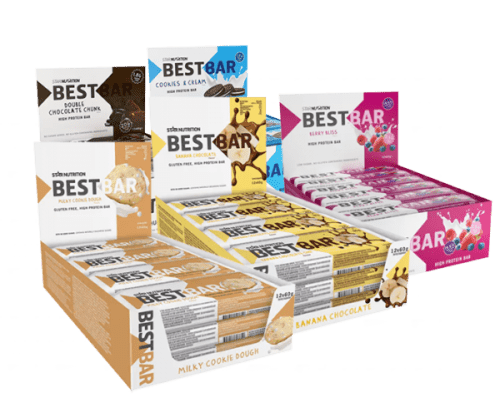
Lithographic (Offset) Printing
Lithographic printing transfers ink from a plate to a rubber blanket, then onto the substrate, with options for coatings or varnishes.
Advantages
Highest Quality: Sharp, detailed graphics with accurate color reproduction.
Premium Finishes: Coatings and varnishes enhance durability and appearance.
Scalable: Handles small to large format prints.
Limitations
High Setup Cost: Plates and setup make short runs expensive.
Not Sample-Friendly: Prototypes are cost-prohibitive.
Longer Lead Time: Setup and adjustments require planning.
Best Fit: High-volume displays where premium image quality is essential for brand impact.`
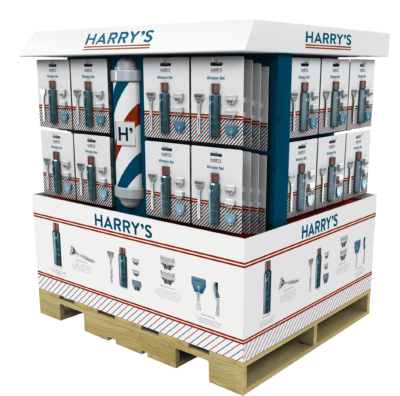
Designing Graphics for POP Displays
Effective POP displays combine structure with clear, impactful graphics. Common elements include:
Logos and Brand Colors
Product Imagery
Text (ingredients, instructions, contact info)
Symbols and Icons
Promotions or Pricing
Call-to-Action Messaging
Mascots or Characters
Any artwork provided must be adjusted to fit dielines correctly. Designers ensure bleed, folds, and structural features align with graphics to avoid misprints.
Choosing the Right Printing Method
When selecting a printing process, consider:
Quality: Lithographic offers the highest resolution; flexographic is durable but less detailed.
Budget and Quantity: Flexographic suits large runs, digital works best for small runs, lithographic for high-volume premium graphics.
Lead Time: Digital is fastest due to no plate requirements.
Brand Goals: For premium retail impact, lithographic justifies higher cost; for efficiency, flexographic is the workhorse.
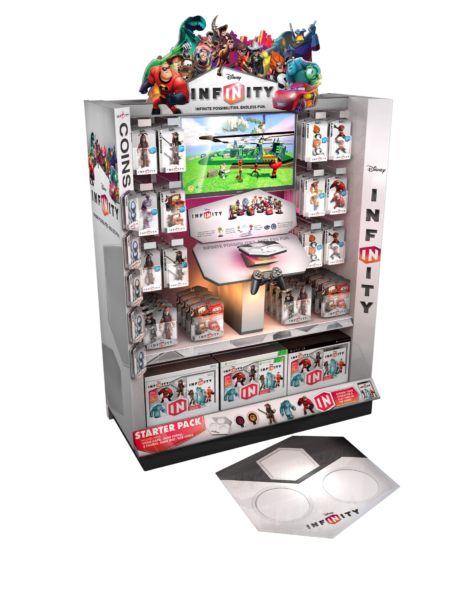
Buyer Takeaway
Use flexographic printing for large-scale runs that need durability and consistent Pantone colors.
Choose digital printing for prototypes, short runs, or campaigns with multiple SKUs.
Invest in lithographic printing for premium displays that require sharp, high-quality graphics.
Selecting the right method ensures POP displays not only stand out visually but also align with budget and timeline requirements.
References
Association of Independent Corrugated Converters (AICC). (2024). Printing Methods in Corrugated Packaging. Retrieved from https://www.aiccbox.org
Flexible Packaging Association. (2023). Digital vs. Flexographic Printing. Retrieved from https://www.flexpack.org
Robertson, G. L. (2016). Food Packaging: Principles and Practice (3rd ed.). CRC Press.
Phat Snax is redefining the snack aisle with a mission to make America’s snacks better for you — without killing the flavor. Their products, like
When choosing corrugated packaging, box style directly impacts cost, strength, speed of packing, and customer experience. Two of the most common options are the Regular
The holiday season pushes packaging supply chains to their limits. With surging e-commerce demand, constrained carrier capacity, and rising material costs, packaging buyers must navigate
Subscription boxes experience a surge in demand during the holiday season as shoppers purchase gift memberships and curated kits. Packaging for these shipments must balance
Fragile products like glassware, electronics, and specialty gifts are especially vulnerable during the holiday rush. With more handling points, packed trailers, and faster fulfillment, the
Shipping costs surge during the holiday season as carriers raise rates and surcharges. For packaging buyers, box design directly impacts freight spend. Oversized cartons, excess
Home » Corrugated POP Display Printing

In the ever-evolving landscape of retail marketing, the art of product presentation plays a pivotal role in captivating consumers and driving sales. Two popular options
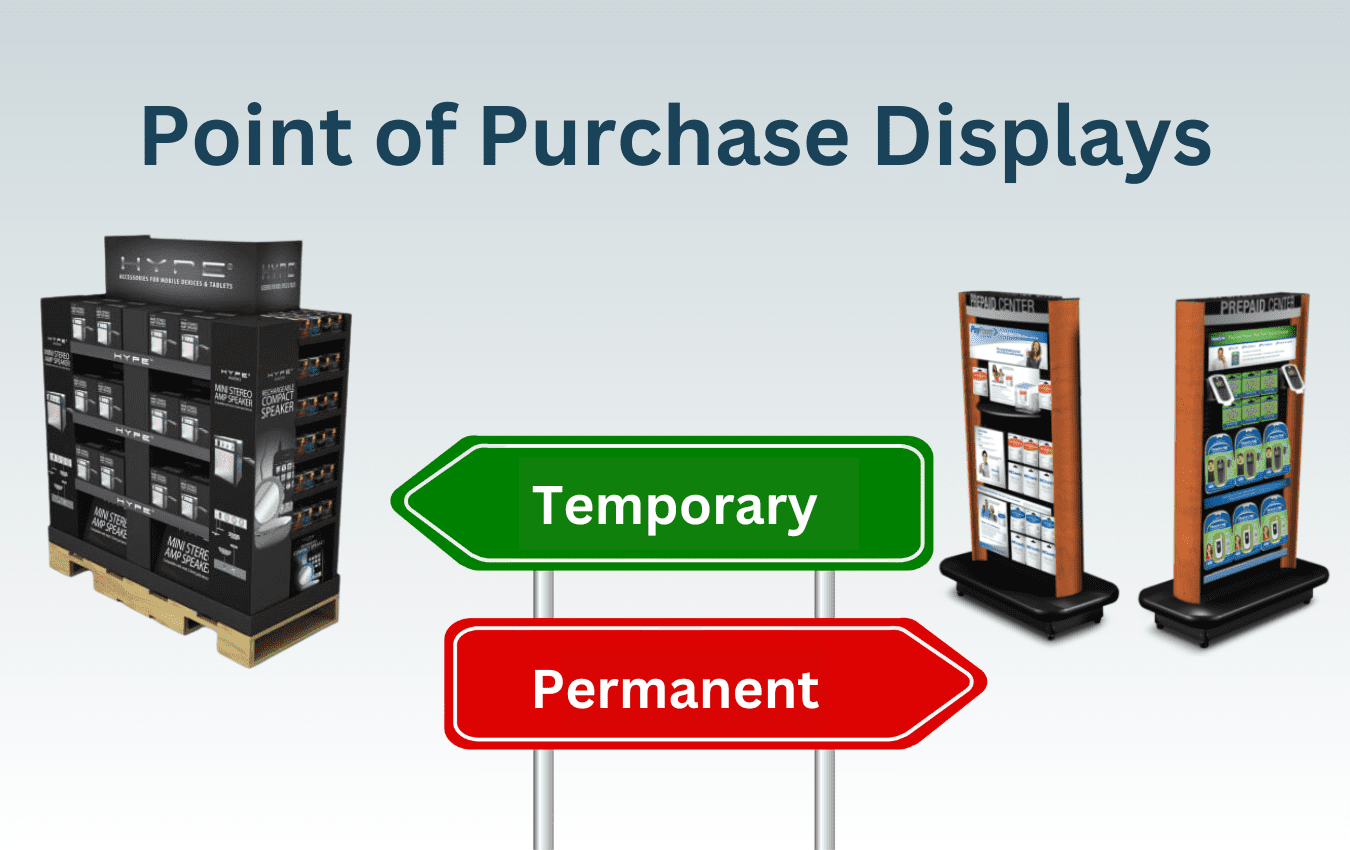
In the intricate world of retail, Point-of-Purchase (POP) displays play a critical role in influencing consumer decisions and driving sales. When it comes to choosing

In the intricate world of retail, where sales are the ultimate goal, having an exceptional product is just the beginning. To truly succeed, retailers need


